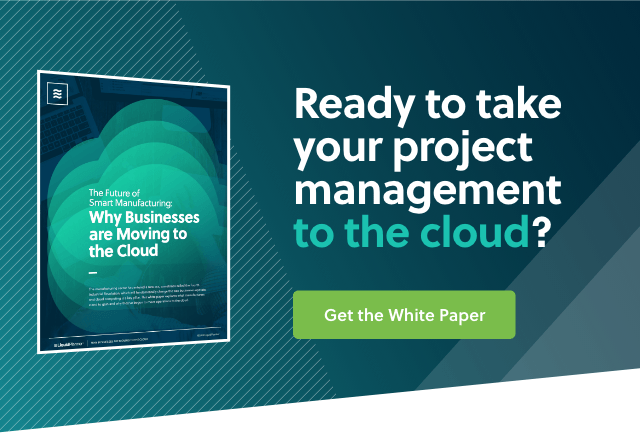It’s official: the cloud has gone mainstream. While early-adopters have been touting the benefits of cloud-based solutions for years, larger organizations, as well as those facing hurdles with new technology, have been slower to adapt. But, according to recent research from Gartner, Inc., that’s changing.
Recently, more organizations, even large enterprises and slow adopters, have begun turning to the cloud. The worldwide public cloud services market is projected to grow 18 percent in 2017 to total $246.8 billion, up from $209.2 billion in 2016, according to Gartner.
“As enterprise application buyers are moving toward a cloud-first mentality, we estimate that more than 50 percent of new 2017 large-enterprise North American application adoptions will be composed of SaaS or other forms of cloud-based solutions,” says Sid Nag, research director at Gartner. “Midmarket and small enterprises are even further along the adoption curve. By 2019, more than 30 percent of the 100 largest vendors’ new software investments will have shifted from cloud-first to cloud-only.”
Quick Cloud Stats
- Seventy-four percent of Tech Chief Financial Officers (CFOs) say cloud computing will have the most measurable impact on their business in 2017. (2017 BDO Technology Outlook Survey)
- Demand for cloud solutions will grow 18% this year to $246.8 billion in total worldwide revenue from $209.2 billion. (Gartner)
- By 2018, at least half of IT spending will be cloud-based. (IDC FutureScape: Worldwide Cloud 2016 Predictions; Mastering the Raw Material of Digital Transformation)
Larger organizations are now learning what early adopters have known for years: cloud-based software can help you save time and money.
Here are some reasons to consider the switch to cloud-based project management software.
Anytime-anywhere access
Design team in Seattle, and production facilities in Detroit? No problem. Cloud-based project management makes collaboration across distances easy. Thanks to the connectivity of high-speed Internet, it’s now possible to work closely with someone you may never meet in real life.
For international companies like Rotork, a leading manufacturer of industrial valve actuators, the ability to access information from anywhere in the world, on mobile or laptop, is invaluable. The company’s gear design team is based in England, while their manufacturing team is in the Netherlands.
With LiquidPlanner, “everybody can access their projects and tasks from different locations and different time zones in the business. We can share information and keep our plans up to date, which will also let us manage common resources across multiple projects.”
–Steve Watkins, R & D Engineering Manager at Rotork
Learn how the Rotork teams use LiquidPlanner to hit their deadlines.
Less time lying awake at night, wondering if your data is safe
Security concerns stop some companies from switching to cloud-based solutions. The idea being that having physical control over one’s servers makes it more secure.
However, cloud software can be just as secure as on-premise. Most reputable cloud-based applications have strong safeguards in place to protect customers’ data while in-transfer and at-rest. For example, LiquidPlanner is hosted with Amazon Web Services (AWS). Our customers’ data is housed at AWS data centers in different geographic areas that are completely independent from one another. With servers in multiple zones, failure in one zone won’t disrupt service.
Here are some of the security headaches avoided by using a reputable cloud software service:
- Data replicated to servers in multiple geographic regions to guarantee maximum availability.
- Daily data backups.
- Uninterrupted power supply, guaranteed with generators.
- Fire detection systems, temperature and climate control, and video surveillance.
Security is a genuine concern, so be sure to thoroughly vet any cloud-based software providers you’re considering. See the steps LiquidPlanner takes to protect customer data.
Fewer emails, less time searching for documents
How many times have you scrolled through a never-ending email chain, looking for that paper clip icon. “Aha! Here’s the file,” you think, only to discover that this attachment is not the final version. Or is it? The document has been updated so many times, you’ve lost track. Now you have to ask your colleague for the final final version. And wait.
Meanwhile, your manager is asking for updates because she was left off the email chain and has no idea what’s going on. Hopefully, your colleague will issue the final version quickly, so your manager’s questions can be resolved and the new final version distributed to the team.
With cloud-based project management, you can cut down on back-and-forth emails and multiple versions of documents. Everyone on your team can quickly access the latest document. Changes, status updates, and comments are automatically sent to everyone who needs them.
For companies like scientific equipment manufacturer Lake Shore Cryotronics, cloud-based project management means better organization and a reduced dependency on email.
“Many team members are using the commenting features in LiquidPlanner to communicate and provide task updates. In the past, these project artifacts would have been buried in emails, with little in the way of organization or visibility. Now, comments are tied directly to the tasks and items they’re relevant to, in a way that provides visibility to everyone on the team.”
– Rob Welsh, Development Process Manager at Lake Shore Cryotronics
Lower upfront costs: no investment in server infrastructure required
On-premise systems tend to cost more upfront, due to onsite software and server installation, software license investments, and the extra IT staff needed to configure and maintain the system. With cloud-based applications, all you need to get started is an Internet connection and a device.
When comparing the costs of cloud-based and on-premise systems, you should also take extra costs like monthly maintenance, hourly customer support, backup software, and electricity consumption into consideration. With cloud-based applications, you won’t need to worry about electricity and backup software fees. Most offer online help articles and resources, as well as customer support and troubleshooting assistance.
If you’d like to compare the total cost of ownership over several years for an on-premise system and a cloud-based Software as a Service (SaaS) system, we recommend this calculator from SoftwareAdvice.com.
Zero time spent on software updates
You’re right in the middle of something, just hitting your groove, when a notification appears on your screen. “Restart your computer to finish installing important updates.”
Nooo. Not now, you think. And you ask for a reminder in one hour. Then you delay it again. And again. Before you realize it, you have 38 updates waiting for you.
With cloud-based solutions, you don’t need to stop your flow for updates. Once new features or updates are live, you have instant access. No download or upgrades required.
Many cloud-based solutions also offer integrations with tools you’re already familiar with. LiquidPlanner, for example, integrates with Google Drive, Zapier, and more. Also available is an open API, enabling you to build integrations with other tools.
Taken together, these five things make a compelling business case for switching to a cloud-based project management solution. Are you ready to join the millions of businesses who are managing their projects in the cloud? Start a free trial today to start saving time and money with LiquidPlanner, cloud-based predictive project management software.








